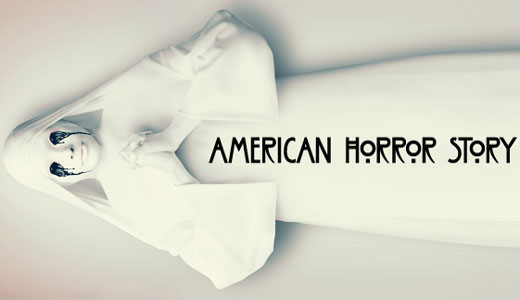
Every now and then, a series comes along that defies and ignores its competition. Rejecting the tried-and-trusted formats that have become the bread and butter of many popular shows, “American Horror Story: Asylum” has proven that, for those who can handle high levels of grotesquery and perversion, it is a series worth getting committed to.
“Asylum” is actually the second season of “American Horror Story;” the first season focused on a modern, ghost-plagued house (in a most unconventional manner). Rather than continuing this story, the creators of the show have decided it ought to be an anthology series, with a different setting and characters for each new season. Enter Season 2, which takes place in 1964, in an insane asylum called Briarcliff. If any viewer is expecting “Asylum” to contain a derivative plot and formulaic tone, that person is in for a surprise.
This season introduces bizarre, unforgettable characters: Kit Walker (Evan Peters), accused of being a mentally ill serial killer named Bloodyface, but who seems (and claims) to be innocent and believes aliens abducted his girlfriend; Lana Winters (Sarah Paulson), a journalist investigating the Bloodyface story; Sister Jude (Jessica Lange), the repressed, devout-yet-hypocritical nun who runs Briarcliff; Dr. Arden (James Cromwell), a sadistic medic whose scientific views clash with Jude’s religion; and Dr. Thredson (Zachary Quinto), who must determine whether Kit is fit to stand trial for his supposed crimes, and who ends up becoming the lone voice of sanity amongst these characters.
If this all seems a little comical and exaggerated, that’s not an unfair assessment; there’s certainly an absurd undertone to all of this. And that’s sort of the point: Tongue in cheek and blissfully controversial, the writers absolutely make it work.
The characters serve as metaphors for messages the writers want to get across. “Asylum” explores characters condemned for having interracial and LGBT relationships, the subservience of women to Catholic dogma, and degradation of the human condition itself by means of failed psychoanalyses. This show unflinchingly champions gay rights, gender equality, and anti-religion by exposing the narrow-minded sentiments of a 60’s-era Catholic institution. Best of all, the show does not waste its time doing all of this gradually; rather, it throws uncomfortable truths right at the audience with less discretion than a battering ram.
Serving as a backdrop to all this is a setting that exudes the gritty atmosphere of Shutter Island. Also thrown into this mix is a dose of religious iconography, albeit highly sexualized and satirized.
The second episode of “Asylum” was practically an ironic nod to The Exorcist, while also paying homage to One Flew Over the Cuckoo’s Nest in a perverse sort of way. And through it all, sweet nun music (ala the “Singing Nun” of 1963) plays in the background, simply adding to what is already a big exposition of crazy dichotomies.
There are a few mild criticisms one might make of the show so far. For one, there are brief interspersals of scenes that flash forward to the present, involving two newlyweds who encounter Bloodyface in the (now abandoned) asylum. These clips feel more like they belong in the noir-styled first season, rather than “Asylum,” where they come off as anathema to what is supposed to be a period piece.
Another initial complaint has, at least on the part of this writer, quickly been withdrawn, and that is that the series lacked a coherent plot, short of shock tactics and scenes of morbidity. But on the contrary, the writers behind this show brought a solid storyline into the fold in a surprisingly subtle way, so that by episode two, the viewer could get hooked on all the characters’ respective backstories and interactions.
Besides the raw, edgy punch this show delivers (likely breaking every taboo left on cable television), another driving force behind it is the flat-out brilliant acting. Jessica Lange and Zachary Quinto are arguably two of the best actors on TV.
Though “American Horror Story” (both of its installments so far) is certainly not for the easily offended, it will earn the appreciation of those who understand its complex characters and macabre humor. And its name, too, is well earned, as “Asylum” also depicts some real-life horror situations that were, quite honestly, made in America.
Photo: American Horror Story official Facebook page









